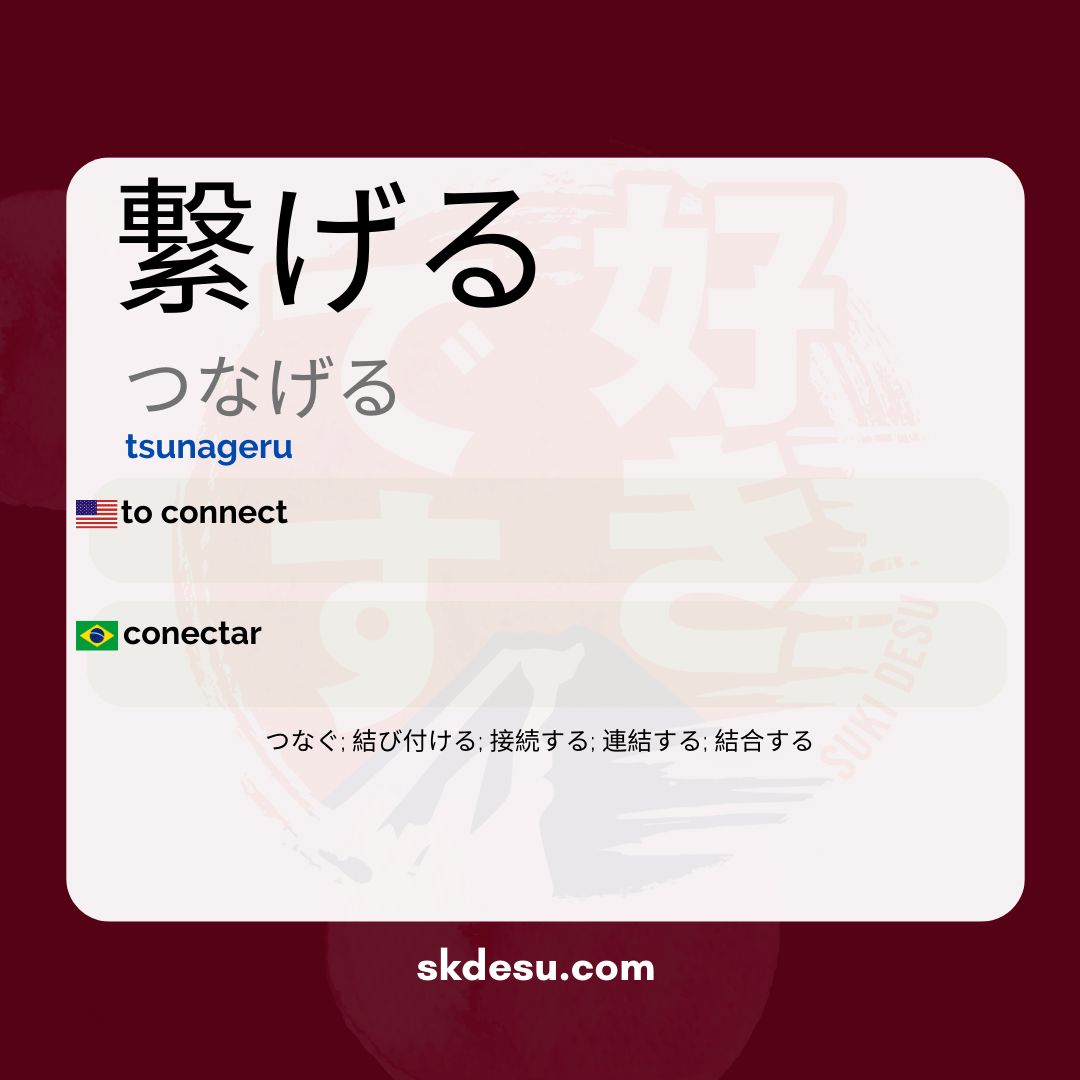Translation and Meaning of: 繋げる - tsunageru
The Japanese word 繋げる (つなげる, tsunageru) is a verb that carries deep meanings and practical applications in everyday life. If you are studying Japanese or simply have curiosity about the language, understanding how and when to use this term can enrich your vocabulary. In this article, we will explore its meaning, origin, usage in sentences, and even tips for memorizing it effectively.
繋げる is frequently used in contexts involving connection, whether physical, emotional, or abstract. Whether to unite objects, ideas, or people, this verb appears in various everyday situations in Japan. Moreover, its structure in kanji provides interesting clues about its origin and evolution in the Japanese language.
Meaning and usage of 繋げる
The verb 繋げる (tsunageru) can be translated as "connect," "join," or "unite." It is used to describe actions like linking cables, establishing relationships, or even connecting abstract concepts. For example, in a conversation about technology, you might hear something like "このケーブルを繋げてください" (Please connect this cable).
Unlike other similar verbs, such as 接続する (setsuzoku suru), 繋げる carries a more active and sometimes even emotional nuance. It not only describes the mechanical action of connecting but can also imply an effort or intention behind that union. This subtlety is important for those who want to sound natural when speaking Japanese.
The origin and structure of kanji
The kanji 繋 is composed of the radical 糸 (ito, meaning "thread") combined with other parts that suggest the idea of tying or binding. This composition visually represents the act of uniting things through threads or ties, which makes perfect sense given the meaning of the verb. The reading つなげる (tsunageru) is one of several possibilities for this character.
It's worth noting that 繋げる is the potential form (possibility) of 繋ぐ (tsunagu), which is the original verb. This relationship between forms is common in Japanese, and understanding this pattern can help you expand your vocabulary more quickly. When you learn a verb, it's worth checking its variations to broaden your expressive possibilities.
Tips for memorizing and using 繋げる
An effective way to memorize 繋げる is to associate it with concrete situations from everyday life. Think of electronic cables, bridges between places, or even relationships between people. Creating sentences like "友達と気持ちを繋げる" (Connecting feelings with friends) can help to remember not only the meaning but also the context of use.
Another valuable tip is to pay attention when you hear or read this word in animes, dramas, or articles in Japanese. Often, the verb appears in contexts of technology or human relationships. Noting these real examples creates a network of mental associations that makes long-term memorization easier.
Connecting in Japanese culture
In Japan, the idea of connection and harmony is deeply valued, and 繋げる reflects this cultural aspect well. The verb often appears in discussions about teamwork, family relationships, and even in traditional concepts such as "en" (縁), which speaks about the bonds that unite people.
In festivals and community events, for example, you can find the term being used both literally (to build structures) and symbolically (to describe the union among participants). This dual application - concrete and abstract - shows how the Japanese language often mixes the physical and the emotional in its vocabulary.
Vocabulary
Expand your vocabulary with related words:
Verb conjugation of 繋げる
- 繋げた - Past
- 繋げない - Negative
- 繋げよう - Potential
- 繋げて - Teform
Synonyms and similar words
- つなぐ (tsunagu) - connect, link, unite
- 結び付ける (musubikakeru) - to connect, to unite, to tie more intimately
- 接続する (setsuzoku suru) - connect, establish a technical link or connection
- 連結する (renketsu suru) - connect, unite physically or sequentially
- 結合する (ketsugou suru) - unite, combine, integrate
Related words
Romaji: tsunageru
Kana: つなげる
Type: verb
L: jlpt-n2
Translation / Meaning: to connect
Meaning in English: to connect
Definition: To connect and connect with each other.
Quick Access
- Vocabulary
- Writing
- Sentences
How to Write in Japanese - (繋げる) tsunageru
See below a step-by-step guide on how to write the word by hand in Japanese. (繋げる) tsunageru:
Example Sentences - (繋げる) tsunageru
See below some example sentences:
Watashitachi wa kokoro wo tsunageru koto ga dekimasu
We can connect our hearts.
We can connect our hearts.
- 私たちは - 「私たち」
- 心を - "Coração" in Japanese, followed by the particle "wo" that indicates the direct object of the sentence.
- 繋げる - "To connect" in Japanese, in the infinitive.
- ことが - Particle "koto ga" indicating action or event
- できます - "Can be done" or "is possible" in Japanese, in the present affirmative.
Other Words of this Type: verb
See other words from our dictionary that are also: verb

